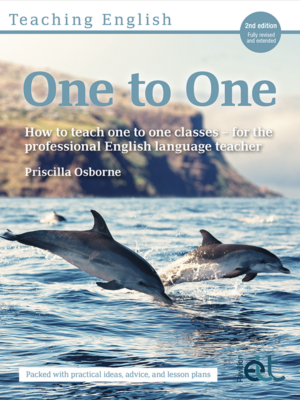Description
Many teachers are currently teaching teenagers either live online or using hybrid learning. Understanding Teenage Language Learners Online aims to provide ELT teachers, directors of studies and academic managers with advice about making the transition online. It includes practical advice and ideas, methodology, and examples from Chris Roland’s own experience.
The book covers major takeaways for online teaching of teenagers, including:
- online safety and best practice,
- managing your online classroom,
- using the chat box to focus on language,
- explaining things and getting a response whilst teaching live online,
- activities and techniques that work well online,
- using clips, video and other effects,
- evaluation, feedback and exams.
The book goes much further than simply telling you what to do and how to do it. It also looks at the why. It explains the deeper rationale for decisions we might make as well as exploring the underlying principles and factors that can make or break a lesson. Throughout the book, the goal is to help make lessons motivating and enjoyable for both teacher and learners. The emphasis is on low-tech, low-prep lessons with maximum results.
In Understanding Teenage Language Learners Online the author examines how a large number of principles of best practice from face-to-face lessons (as covered in Understanding Teenagers in the ELT Classroom) translate to online teaching. The two books complement each other for those teaching in class and online, but can also each be used on their own. In this title, Chris Roland discusses what teachers need to do a little differently when teaching online. He also examines how the new medium allows us to do things that we could not do so easily before.
Understanding Teenage Language Learners Online is part of the Teaching English Online series. This series complements the Teaching English series. It offers a mixture of methodology and practical ideas to get teachers started in an online platform, and to support them in creating and delivering dynamic and creative lessons whether they are teaching solely online or doing a combination of online alongside physical classes, i.e. hybrid teaching. In a similar way to the other titles in the Teaching English and Teaching English Online series, this book can be used for self-study, or as guided reading on more structured training courses.
Reviews:
“In our current situation, I believe that this is a book every teacher should get their hands on, as it provides insights not only into how to teach teenagers more effectively, but also how to stay safe online and how to cope with the challenges of being in front of the screen for a good portion of the day… The main strength of the book is that it doesn’t overlook the problems that are bound to occur while teaching online: instead, it delves into them and puts forward suggestions and alternative ways of solving them… I can confidently say [it] will definitely help me become a better online teacher. It is a book that I can thoroughly recommend.” – William Chaves Gomes, English Teaching professional (Issue 137, November 2021)
“In summary, this is a valuable reference book for anyone passionate about teaching teenagers in an online environment and those who would like to refresh or develop their practice in this area… I congratulate the author for his tremendous work, almost every single line of which resonates with me on one level or another. Whether you are a pedagogical lion or you feel like a fish out of water when it comes to online teaching to groups of teens, this book will guide you in delivering engaging lessons.” – This review by Lyubov Chesnokova was featured in IATEFL YLTSIG’s newsletter TEYLT Worldwide (Issue 1, 2022). Find out more about becoming a member of IATEFL YLTSIG here.









Reviews
There are no reviews yet.